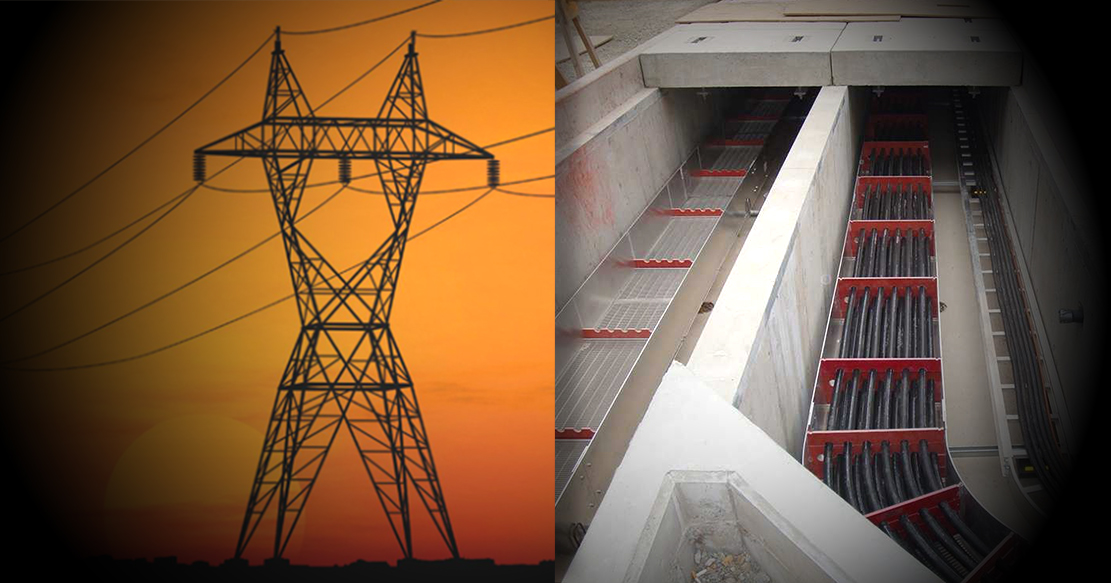
Trends of Upgrading to Underground Cables
Installation of power lines and utility cables gives us the choice of underground cabling or aerial cabling.
Underground cabling is often the most suitable choice for cable installation unless refrained due to specific conditions. Less space requirement, less visual impact, limited exposure to danger, and less susceptibility to damage, make underground cabling preferable to overhead cables.
Some factors required for Underground (UG) cable manufacturing are application purpose, operating voltage, and temperature, current to be carried, the number of conductors and their size, etc. The convenience, advantage, and high-power rating of UG cables have increased demand and usage for electrical power transmission. And the cable system is gradually evolving with advanced design and technology trends like Cross-linked polyethylene (XLPE) and Gas-insulated cables (GILs) to meet the desired needs and requirements.
Gloster Cables introduces advanced trends and technology in its underground cables categories to increase their current carrying capacity, jacketing, durability, and safety.
Underground Cables and How they are different
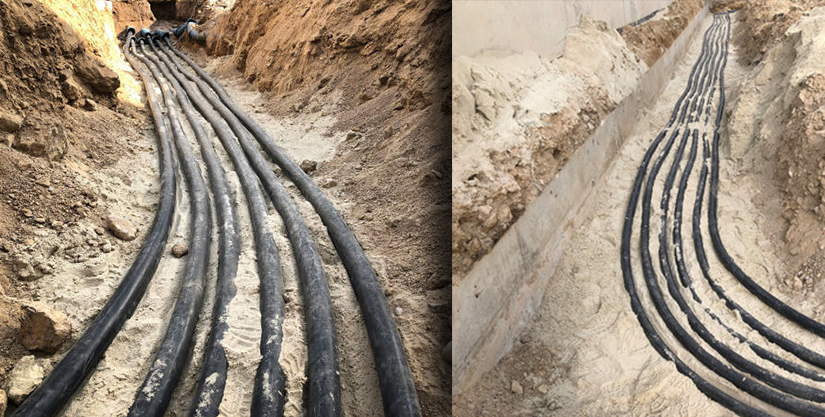
The Underground cables for power transmission are in use where it is not feasible to use overhead or aerial lines. An interrupted power supply requirement makes it preferable for industries, residential installations, sub-stations, railways, road crossings, and other places.
UG Cables can get categorized on several criteria like the number of conductors in the cable, voltage rating, construction, type and thickness of insulation, and installation and laying of cables. The classification based upon voltage rating of the UG cable is low tension cables having a maximum voltage handling capacity of 1KV, high-tension cable for a voltage capacity of 11KV, super tension cables of 33KV voltage capacity, extra high tension and extra-super voltage capacity of 66KV and more than 132KV respectively.
The cables are directly buried in a trench without additional accessories or with cooling pipes if required. And can be installed in Concrete troughs and tunnels too. For cables operating at higher voltage, gas insulation lines are safer.
Structure of Underground Cables
The structure of UG cables consists of one central core or several cores, i.e., one, two, or four bunched together. These cores are tinned copper conductors or sometimes aluminum conductors, insulated from each other with paper or impregnated paper or varnished bitumen, or vulcanized bitumen. Around the insulation, a metallic sheath of lead or alloy of aluminum helps protect the cable against the ingress of moisture.
Based upon construction, different types of UG cables include belted cables, screened cables, and pressure cables.
In Belted cables, conductors are grouped and insulated with a paper belt. And each conductor is separately insulated with an impregnated paper. The space between the paper belt and conductors gets filled with a fibrous dielectric material, such as jute or hessian, for flexibility and a circular shape. Then, the metallic sheath and armoring cover the jute layer for protection. Because of tangential electric field and stressed insulation, these cables are not preferable for more than 11KV.
Screened cables are H-type, S.L type, and H.S.L type cables, whereas pressure cables are available as oil-filled and gas-filled cables.
Mechanism and Reasons of Failure of Underground Cables
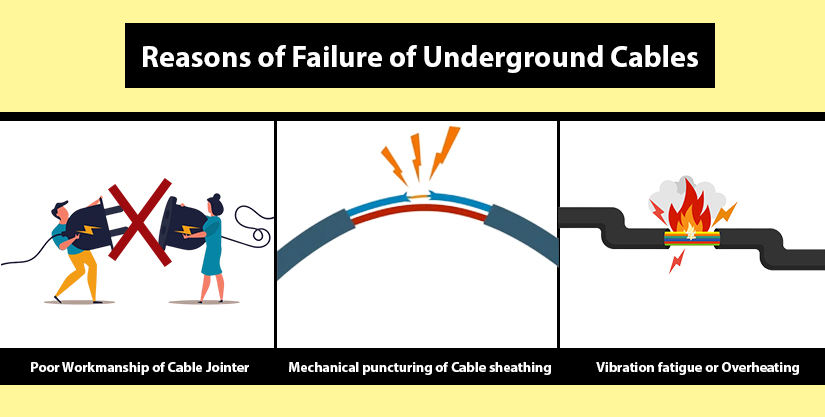
The two mechanisms of the breakdown of underground cables are Progressive Coring and Thermal Instability.
Progressive Coring starts from the core or sheath, bridging the electrodes. And once it occurs, it continues until the cable breaks down. Thermal instability happens due to a rapid increase in power with the temperature rise. In Thermal Instability, there is no damage until just before breakdown.
Some of the common reasons for UG cable failure are as follows.
Poor Workmanship of Cable Jointer
The poor workmanship of the cable jointer with the sealed end at the cable sealing box is one of the most common causes of failure of UG cables.
Mechanical puncturing of Cable sheathing
Mostly during industrial installations or areas having many UG cables, mechanical puncturing of cable sheathing happens due to the usage of a crowbar or similar things.
Vibration fatigue or Overheating
Vibration fatigue and overheating also result in premature cable failure.
New Trends in Undergrounding Changing the Cables Structure
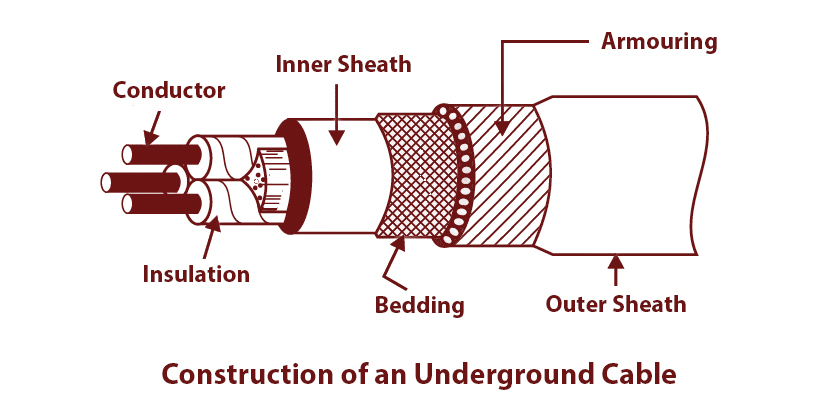
Even though underground cabling is more expensive than overhead cabling, the higher power rating of underground cables and several other reasons makes underground cables preferable. Some of the reasons are
1. Limited Space for new and existing substations
Limitations of space of the new and existing substations, restrictions, and no scope of expansion make underground cabling the right way for transmission lines. Congested areas and prohibition of overhead lines due to safety reasons make underground cabling the safe choice.
2. Customer Awareness
The rising awareness among customers for the environment, visual impact of transmission lines, vulnerability of damage due to wind, rain, other natural disasters, etc., drives them to use UG cables.
3. Reliability of transmission grid
The demand for an increase in transmission grid reliability, monitoring, and diagnosis makes the UG cabling system preferable. Less exposition to weather conditions increases the reliability of UG cables.
These factors add to the demand for UG cables and enhance the reliability and safety of UG cables. UG cables are manufactured with high insulation and for several voltage ranges.
The usage of insulation material depends upon the operating temperature.
PVC insulation is suitable for a maximum operating temperature of 85°C, and XLPE & rubber for a maximum 90°C. For the maximum operating temperature of 150°C, Rubber – EPR IE-2, EPR IE-3, EPR IE-4, and SILICON IE-5 insulated UG cables are preferable.
Pressure cables designed for voltages above 66Kv are suitable for congested urban areas and offer lesser voltage drop, low maintenance, and fewer faults. The H-type screened cables have a high breakdown strength and fewer dielectric losses. And S.L type cables with separate sheaths reduce chances of core-core breakdown and are easy to bend.
For high-voltage transmission networks, XLPE and Gas-insulated cables are suitable. XLPE cables give more stability at high temperatures for normal loading and short-circuit conditions. They are also applicable for direct current power transmission. GILs can be installed underground and through tunnels and trenches, with low resistive loss and less fire risk.
Advantage of Underground Cables
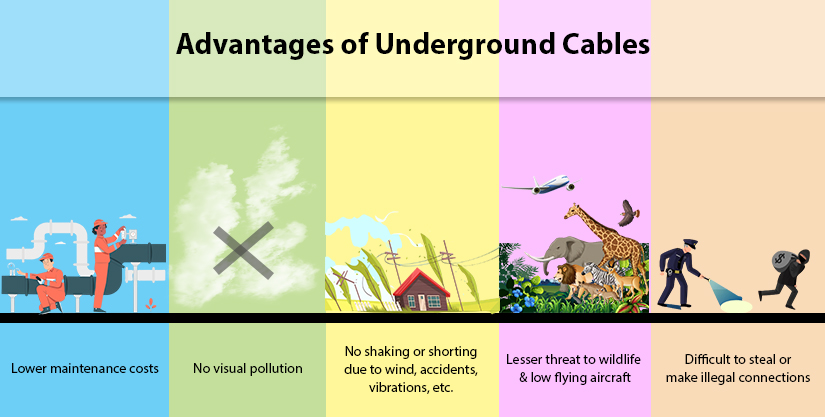
UG cables bring several advantages, and a few are listed down.





Underground Cables as a better substitute for Aerial Cables
The dense population in urban areas, natural hindrances, exposure to damage, and other additional factors is driving the usage of UG cables over aerial cables. UG cables are continuously evolving to meet the demands as a justifiable solution for high-power overhead lines.
With strict adherence to standard quality policy, Gloster Cables manufactures PVC and XLPE insulated LV and HV UG cables for several industrial and domestic uses. We are continuously evolving our product spectrum to meet the changing demands of the customers.
CONTACT US